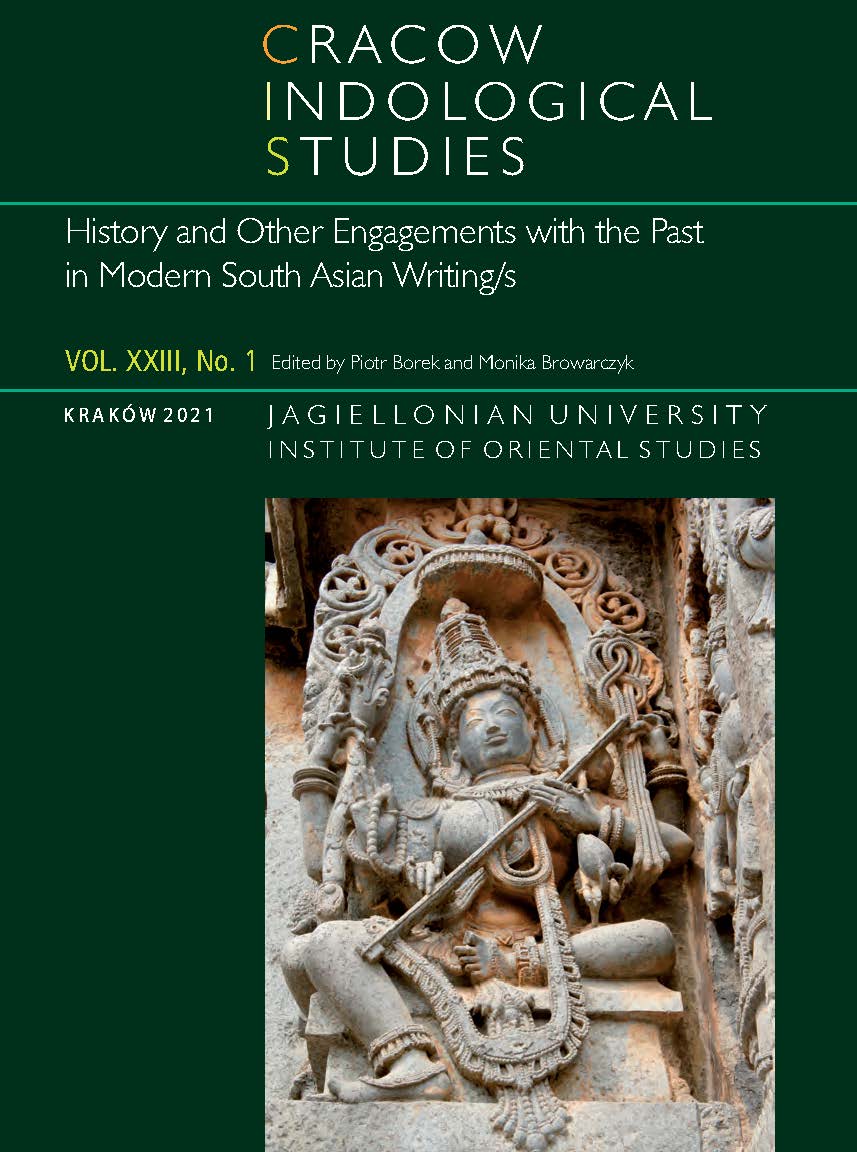How Real Is Hunger?
How Real Is Hunger?
Stories of a Disaster and Amr̥tlāl Nāgar’s Bhūkh
Author(s): Justyna KurowskaSubject(s): History, Language and Literature Studies, Literary Texts, Fiction, Studies of Literature, Recent History (1900 till today), Other Language Literature, WW II and following years (1940 - 1949)
Published by: KSIĘGARNIA AKADEMICKA Sp. z o.o.
Keywords: hunger; Bengal Famine of 1943; disaster literature; disaster narrative; Amr̥tlāl Nāgar; Bhūkh; Hindi novel; authenticity in a novel; violent death;
Summary/Abstract: The present paper looks at a fictional account of the Bengal famine of 1943 in order to locate relevant historical information regarding a specific period of time (Chatterjee 2014) and identify elements that would allow it to be read as an example of the ‘prose of the world’ in Ranajit Guha’s understanding of the term (Guha 2002). The narrative of Amr̥tlāl Nāgar’s Bhūkh is framed through author’s recourse to his own experience, artistic and historical research, lived emotions and personal feeling of urgency to record the event. By repeatedly raising the claim of authenticity of his testimonial, Nāgar unwittingly draws us into an investigation of his relationship with the main narrator and the protagonist of his work. This, in turn, reveals the absence of clarity on the part of the author—he seems in two minds when discussing the role of the elites in making of the famine and is unable to either criticise or justify their failure to act. Further, the paper investigates social reality presented in the novel; the naturalistic, progressive aesthetics used in the description of the embodied violence of hunger; and the portrayal of the protagonist whose vantage point makes the story significantly detached from the ‘masses’ depicted variously as insects or savages, driven by hunger and hunger only. Principal focaliser’s upper-caste perspective allows him to feel superior to the less fortunate ‘skeletons’ and ultimately justify his survival by saving a seemingly upper cast infant, the action understood by him as equal to saving the entire human race. However, to my mind, the reality of hunger presented by the protagonist is conventional, self-centred, and lacks in-depth social criticism.
Journal: Cracow Indological Studies
- Issue Year: 23/2021
- Issue No: 1
- Page Range: 55-89
- Page Count: 35
- Language: English

